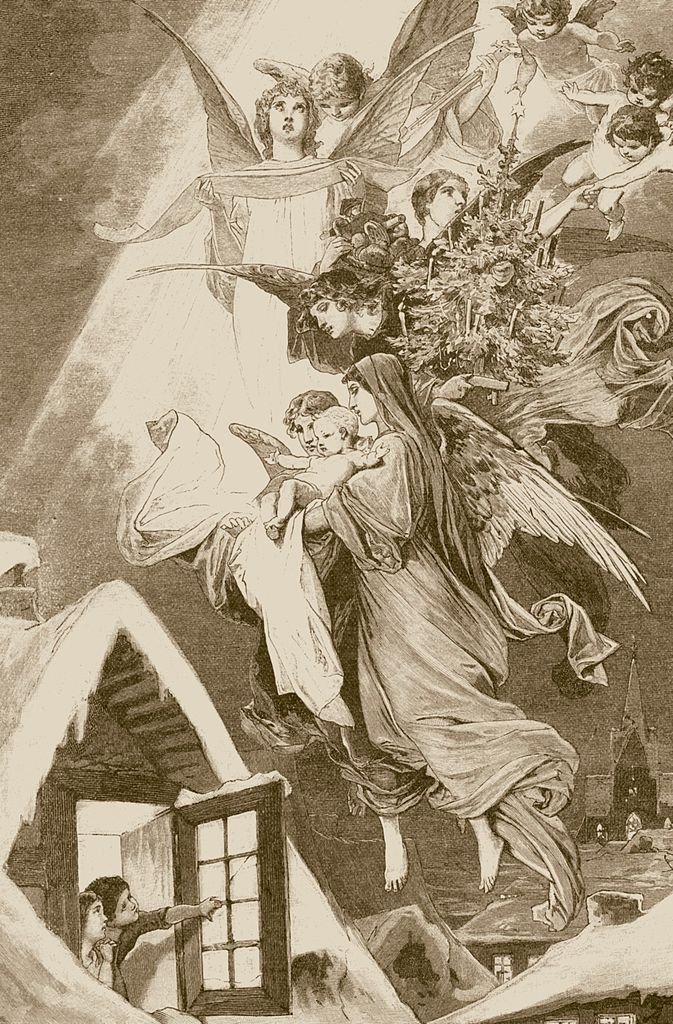10 December 2021
Mistletoe is a hemiparasitic plant of the order Santalales, especially European mistletoe (Viscum album). A hemiparasitic plant derives water and nutrients from its host plant but retains some capacity for photosynthesis itself. The word is from the Old English mistel (mistletoe) + tan (twig). Mistil, mistel, and mistiltan appear in a number of Latin–Old English glossaries, and the form mistelta appears in the twelfth-century Durham Plant Glossary. Tan could also mean toes (singular ta), so that explains how misteltan became mistletoe in the transition to Middle English. The shorter form mistle can still be found, chiefly in Scottish dialect.
Traditionally, mistletoe was thought to have medicinal, and even magical, powers. Today, the plant is commonly used as a Yuletide holiday decoration, and one tradition is that when two people are found standing underneath hanging mistletoe they must kiss. The earliest references to the tradition of kissing under the mistletoe that I have found date to the late eighteenth century, although there are certain to be older ones. Nor do I know how the association of kissing with mistletoe began. (I’m an expert at searching for words and usages, not folklore and traditions.) There is this from a song in George Colman’s 1784 play Two to One:
When at Christmas in the hall
The men and maids are hopping,
If by chance I hear ’em bawl,
Amongst ’em quick I pop in.
When all the men, Jem, John and Joe,
Cry, “What good luck has sent ye?”
And kiss beneath the mistletoe
The girl not turn’d of twenty.
The poem Approach of Christmas appeared in the London Times of 24 December 1787:
The pendant mistletoe hung up to view,
Reminds the youth, the duty youth should do;
While titt’ring maidens, to enhance their wishes,
Entice the men to smother them with kisses.
Washington Irving records the following in his 1819 The Sketch Book of Geoffrey Crayon. Irving is an American writer, but here he is writing about Christmas traditions in England:
As we approached the house, we heard the sound of music, and now and then a burst of laughter, from one end of the building. This, Bracebridge said, must proceed from the servants’ hall, where a great deal of revelry was permitted, and even encouraged, by the squire, throughout the twelve days of Christmas, provided every thing was done conformably to ancient usage. Here were kept up the old games of hoodman blind, shoe the wild mare, hot cockles, steal the white loaf, Bob apple, and snap dragon: the Yule clog [sic], and Christmas candle, were regularly burnt, and the misletoe [sic], with its white berries, hung up, to the imminent peril of all the pretty housemaids.*
*The misletoe is still hung up in farm houses and kitchens at Christmas; and the young men have the privilege of kissing the girls under it, plucking each time a berry from the bush. When the berries are all plucked, the privilege ceases.
Sources:
“Approach of Christmas.” Times (London), 24 December 1787, 3. Gale Primary Sources: The Times Digital Archive.
Colman, George, Jr.. Songs, Duets, Trios, &c. in the New Comedy of Two to One, third edition. London: T. Cadell, 1784, 25. Eighteenth Century Collections Online.
Irving, Washington. The Sketch Book of Geoffrey Crayon, Gent. New York: C.S. Van Winkle, 1819, 379. HathiTrust Digital Archive.
Oxford English Dictionary, third edition, June 2002, modified September 2021, s.v. mistletoe, n.; modified June 2021, s.v. mistle, n.
Image credit: Alex Brown, 2014. Public domain image.





